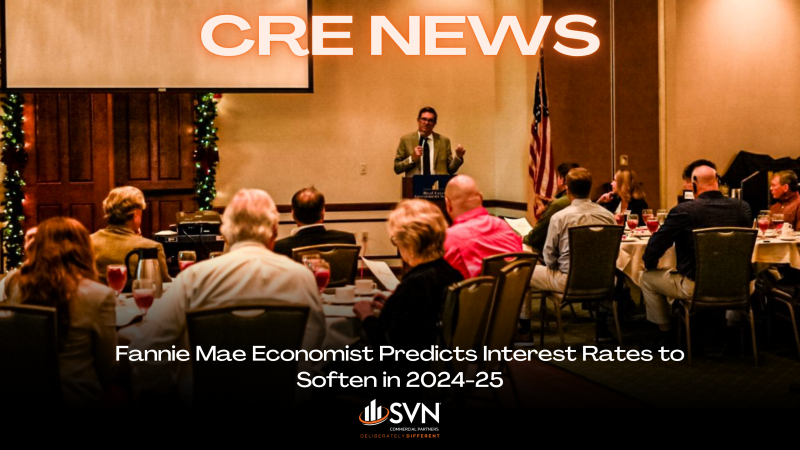Doug Duncan has three economics degrees, including a Ph.D. in agricultural economics from Texas A&M. As the chief economist and a senior vice president for Fannie Mae, he possesses a wealth of experience in following financial trends related to the housing market.
But even he said his prognostications relating to the housing market and interest rates should be viewed as hypothetical. They are based on millions of data-points made daily, he said, and anything can happen. That said, he shared some ideas.
“The big question that I think is still out there, will this rise in interest rates, which happened very rapidly and went significantly far, ultimately lead to a recession?” Duncan said. “I can give you a data set that will show we’ll have a significant recession, or I can give you a data set that will show we will have very strong growth. Take your choice.”
The preference among about 150 people in the Osprey Room at Pelican Preserve Clubhouse in south Fort Myers on Dec. 12, of course, was the strong growth route. Engineers, land brokers, developers and bankers were on hand at the monthly Real Estate Investor’s Society lunch meeting. They listened to Duncan speak for about half an hour on what’s next for the housing market, interest rates and economy.
Duncan called those in attendance vital parts of the housing ecosystem.
“Housing itself is going to be slow through the first part of the year of 2024,” Duncan said. “And then when rates come back down a little bit in the second half, it will start to pick up.”
“But we do think that in 2024, they will cut rates at least two times. Part of it is, what do they think about changing their policy during an election year, which it will be. And then in 2025, we think there will be three cuts or thereabouts.”
Duncan moved to Cape Coral in 2010. He began remote working “before it was cool,” he said, shifting from the primary lending market to the secondary market with Fannie Mae, which is the nickname for the Federal National Mortgage Association.
Fannie Mae buys home mortgages in bulk from banks.
Buyers, sellers and lenders are all about to enter a new year wondering if the economy will stall in the form of a recession.
“Or will we get this soft landing,” Duncan said. “What we mean by soft landing, is when inflation slows significantly to the fed’s target, in fact, without there being a dramatic rise in unemployment or an actual decline in economic activity.
“We actually still have a mild recession in the second quarter of 2024 in our forecast. But the truth is, it’s 50-50 if something like that happens or if we manage to skip by without it.”
Interest rates and where they go would play a role in whether a recession happens—or not, he said.
“The peak level of interest rates for mortgages were somewhere close to 8%,” Duncan said. “I don’t think we’ll be back to that again. But right at the moment, rates are falling a little further than they’re likely to settle at. The market is trying to judge whether or not the fed is going to ease, and if so, how soon and by how much. They’re also trying to weigh the amount of federal debt that has to be financed and how that’s going to weigh on interest rates in the treasury market. There’s a bunch of unknowns that the market is trying to sort out.”
Affordability of homes, whether they are by renting or home ownership, has become more challenging for two reasons, he said.
“It’s a combination of the rising prices, which took place from 2020 through 2022, and the rising interest rates, which took place from the second half of 2022 to today,” Duncan said. “It’s a combination of price increases and the interest rate increases that has reduced affordability, so people’s houses aren’t moving as fast they would like.”
Predicting future trends, Duncan said, was an inexact science, regardless of education, expertise and knowledge.
“Just to give you an idea of the dispersion of views in the economic space today, Goldman Sachs’ perspective on where the federal funds target will be at the end of 2025 is 3.5 to 3.75,” he said. “Morgan Stanley’s same estimate of the same measure at the same time is 2.25 to 2.5. UBS’s same estimate of the same measurement at the same time is 1 to 1.25. These are three very sophisticated financial institutions that have dramatically different views of where the economy is going to go.”

